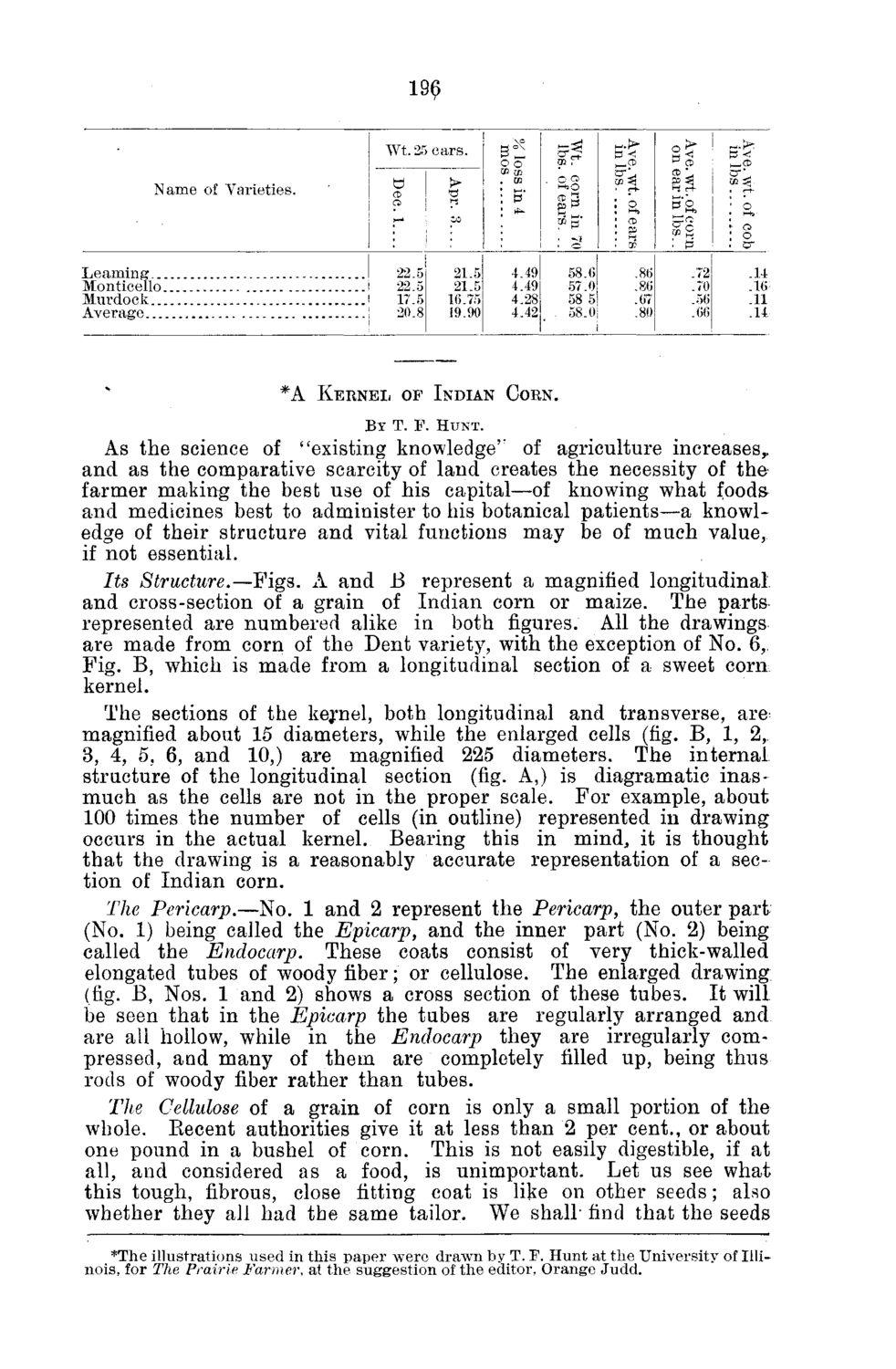| |
| |
Caption: Board of Trustees Minutes - 1886
This is a reduced-resolution page image for fast online browsing.

EXTRACTED TEXT FROM PAGE:
190 % loss in 4 mos Ave. wt. of ears in lbs Ave. wt. of corn on ear in lbs.. Wt. corn in 70 lbs. of ears. .. Wt. 2f c a r s . P < wt. of cob bs Apr. 3 Dec.l.... N a m e of Varieties. Learning Monticello Murdock Average 22.5 22.5 17.5 20.8 21.5 21.5 16.75 19.90 4.49 4.49 4.28 4.42 58.6 57.0 58 5 . 58.0 .86 .86 .67 .80 .72 .70 .56 .66 .14 .16 .11 .14 *A KERNEL OF INDIAN CORN. BY T. F. HUNT. As the science of "existing knowledge'' of agriculture increases,, and as the comparative scarcity of land creates the necessity of the farmer making the best use of his capital—of knowing what foods and medicines best to administer to his botanical patients—a knowledge of their structure and vital functions may be of much value, if not essential. Its Structure.—Figs. A and B represent a magnified longitudinal and cross-section of a grain of Indian corn or maize. The parts represented are numbered alike in both figures. All the drawings are made from corn of the Dent variety, with the exception of No. 6, Fig. B, which is made from a longitudinal section of a sweet corn kernel. The sections of the kernel, both longitudinal and transverse, are^ magnified about 15 diameters, while the enlarged cells (fig. B, 1, 2,. 3, 4, 5, 6, and 10,) are magnified 225 diameters. The internal structure of the longitudinal section (fig. A,) is diagramatic inasmuch as the cells are not in the proper scale. For example, about 100 times the number of cells (in outline) represented in drawing occurs in the actual kernel. Bearing this in mind, it is thought that the drawing is a reasonably accurate representation of a section of Indian corn. The Pericarp.—No. 1 and 2 represent the Pericarp, the outer part (No. 1) being called the Epicarp, and the inner part (No. 2) being called the Endocarp. These coats consist of very thick-walled elongated tubes of woody fiber; or cellulose. The enlarged drawing (fig. B, Nos. 1 and 2) shows a cross section of these tubes. It will be seen that in the Epicarp the tubes are regularly arranged and are all hollow, while in the Endocarp they are irregularly compressed, and many of them are completely filled up, being thus rods of woody fiber rather than tubes. The Cellulose of a grain of corn is only a small portion of the whole. Becent authorities give it at less than 2 per cent., or about one pound in a bushel of corn. This is not easily digestible, if at all, and considered as a food, is unimportant. Let us see what this tough, fibrous, close fitting coat is like on other seeds; also whether they all had the same tailor. We shall* find that the seeds *The illustrations used in this paper were drawTn by T. F. Hunt at the University of Illinois, for The Prairie Farmer, at the suggestion of the editor, Orange Judd.
| |